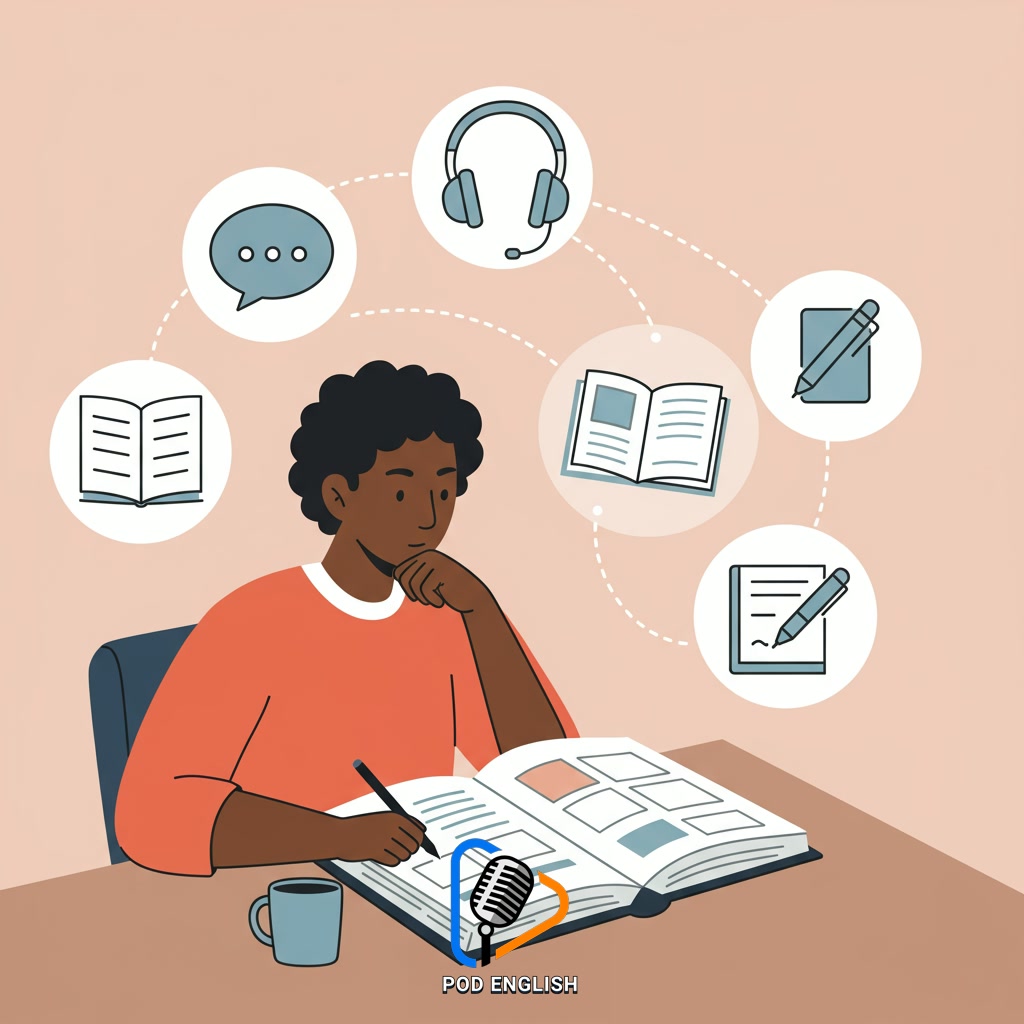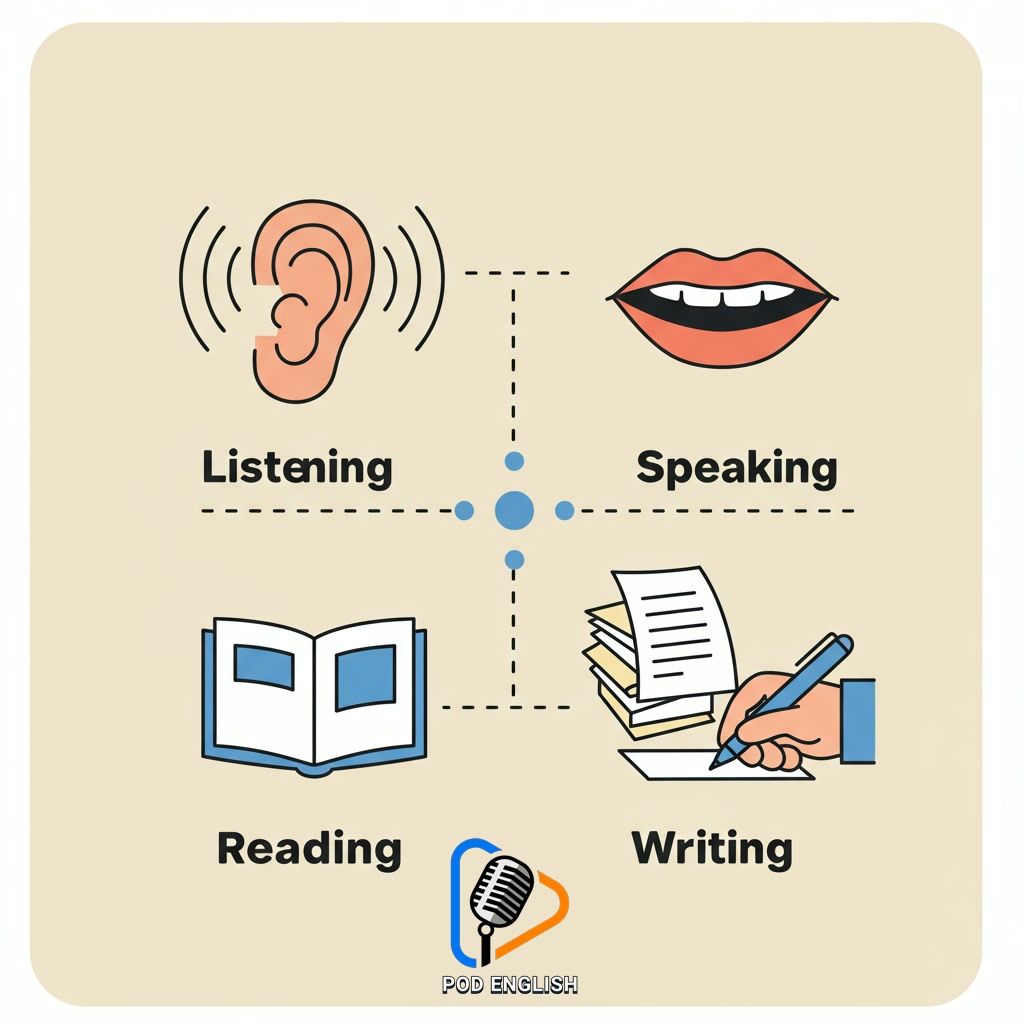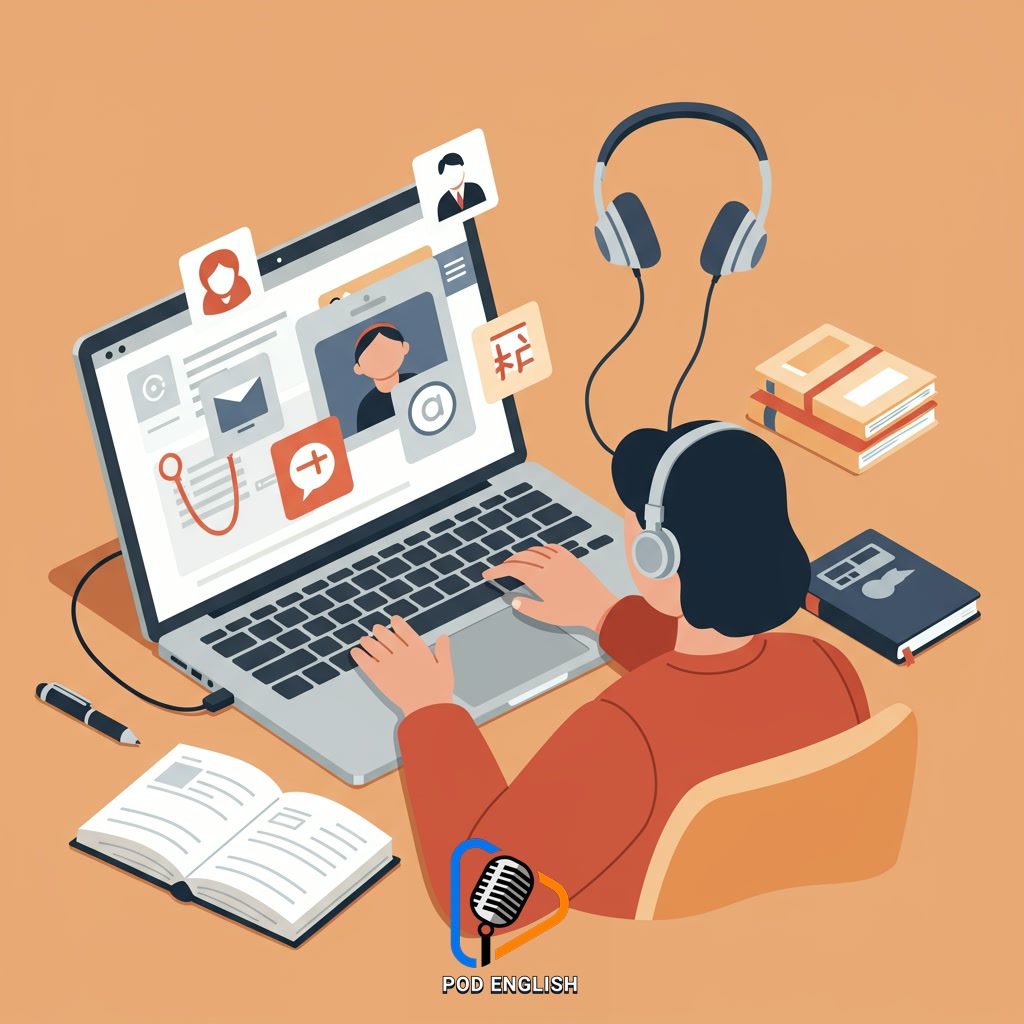Learn English
Unlock English Fluency: A Step-by-Step Guide to Your Study Plan

This content provides a practical, step-by-step approach to developing a personalized plan for achieving English fluency. It guides individuals through the process of structuring their language learning journey. The focus is on creating an effective strategy to enhance speaking, listening, reading, and writing skills systematically. Following this guide helps users build a solid foundation and progress towards their fluency goals.
Table of Contents
- Section 1: Introduction: Why Fluency Matters and Getting Started
- Section 2: Assess Your Current Level & Set SMART Goals
- Section 3: Design Your Personalized English Study Plan
- Section 4: Mastering the Core Skills: Listening, Speaking, Reading, Writing
- Section 5: Find Your Resources and Practice Effectively
- Section 6: Track Your Progress and Stay Motivated
- Section 7: Beyond the Basics: Continuous Improvement
Section 1: Introduction: Why Fluency Matters and Getting Started
Achieving fluency in English is a key goal for many learners. Fluency goes beyond simply knowing vocabulary and grammar; it means being able to communicate effectively and confidently in various situations. Whether for career advancement, travel, or connecting with people globally, mastering English opens up a world of opportunities. This guide is designed to help you build a clear, personalized study plan to navigate your learning journey successfully. In this introductory section, we’ll explore why fluency is a valuable objective and lay the groundwork for getting started on creating your own structured approach to learning. It’s about taking that crucial first step towards your language goals.

Introduction: Why Fluency Matters and Getting Started
Section 2: Assess Your Current Level & Set SMART Goals
Following the understanding that fluency is key, the crucial next step in building your study plan is honestly evaluating where you stand now. Assessing your current English level across speaking, listening, reading, and writing helps you identify strengths and weaknesses. You can use online tests, practice exams, or even self-reflection based on your confidence in different situations. Once you have a clear picture of your starting point, you need to set SMART goals. SMART stands for Specific, Measurable, Achievable, Relevant, and Time-bound. Instead of a vague goal like “improve English,” aim for something specific like “be able to hold a 5-minute conversation about my hobbies by the end of next month.” Setting SMART goals provides direction, motivation, and a way to track your progress effectively on your journey towards fluency.

Assess Your Current Level & Set SMART Goals
Section 3: Design Your Personalized English Study Plan
Building on your level assessment, the critical task now is designing your unique study plan. This involves defining clear, achievable goals based on your identified strengths and weaknesses. What specifically do you want to accomplish – fluency in conversation, improved comprehension for work, better writing for academic purposes? Next, determine the resources and methods you will use. Will you use language apps, textbooks, online courses, conversation partners, or a combination? Crucially, allocate dedicated time for learning, scheduling specific slots in your day or week for different activities. Structure your plan to ensure balanced practice across speaking, listening, reading, and writing, integrating activities that are engaging and relevant to your goals. This personalized plan is your roadmap, guiding your progress towards fluency step by step.

Design Your Personalized English Study Plan
Section 4: Mastering the Core Skills: Listening, Speaking, Reading, Writing
Building on your level assessment, the critical task now is designing your unique study plan. This involves defining clear, achievable goals based on your identified strengths and weaknesses. What specific areas need the most attention? The core skills of Listening, Speaking, Reading, and Writing form the foundation of English fluency, and your plan must integrate practice for each. For Listening, focus on varied materials like podcasts, music, and videos at different speeds. Improve Speaking by finding conversation partners, joining language exchange groups, or even practicing speaking aloud to yourself. Enhance Reading by tackling diverse texts, from news articles to novels, focusing on comprehension and vocabulary. Develop Writing skills through journaling, email exchanges, or structured exercises. The key is consistent, targeted practice across all four areas, adjusting the balance based on your personal learning objectives and progress.

Mastering the Core Skills: Listening, Speaking, Reading, Writing
Section 5: Find Your Resources and Practice Effectively
With your personalized study plan and goals clearly defined, the next crucial step is identifying and utilizing the right resources to support your learning journey. The English learning landscape is vast, offering everything from language learning apps and websites to textbooks, podcasts, videos, and opportunities for interaction with native speakers or fellow learners. Choose resources that align with your specific goals and learning style – whether you’re focusing on grammar rules, expanding vocabulary, improving listening comprehension, or building confidence in speaking. Effective practice isn’t just about consuming content; it involves actively engaging with the language. This means practicing speaking aloud, writing short pieces, summarizing what you read or hear, and consistently applying what you learn in real-world contexts, even if it’s just practicing in front of a mirror or with a language exchange partner. Regular, focused practice with suitable resources is key to transforming your plan into tangible progress towards fluency.

Find Your Resources and Practice Effectively
Section 6: Track Your Progress and Stay Motivated
After selecting the right resources for your study plan, consistently tracking your progress is vital for maintaining momentum and seeing tangible results. Regularly reviewing what you’ve learned and how you’ve improved helps you identify areas where you’re excelling and those needing more attention. This could involve keeping a language learning journal, taking periodic self-assessments, or simply noting down new vocabulary and grammar points mastered each week. Seeing how far you’ve come is a powerful motivator. To stay energized, celebrate small achievements along the way, connect with other learners, and remind yourself of your initial fluency goals. Varying your study methods and topics can also prevent boredom and keep the learning process engaging. By actively monitoring your journey and employing strategies to stay motivated, you ensure consistent effort and move steadily towards your fluency objectives.

Track Your Progress and Stay Motivated
Section 7: Beyond the Basics: Continuous Improvement
After mastering the basics and establishing a consistent study routine, the journey towards fluency doesn’t end; it evolves. “Beyond the Basics: Continuous Improvement” is about embracing language learning as an ongoing, dynamic process. This stage involves setting new, more challenging goals as your proficiency grows, moving beyond foundational skills to tackle complex native materials, nuanced grammar, and idiomatic expressions. It requires actively seeking out diverse and authentic content – podcasts on specialized topics, academic articles, films without subtitles, or engaging in challenging conversations. Continuously evaluating your evolving strengths and weaknesses, and adapting your study methods accordingly, is crucial. This phase is less about reaching a final destination and more about the rewarding, lifelong journey of deepening your connection with the English language, constantly expanding your knowledge and capabilities.

Beyond the Basics: Continuous Improvement













